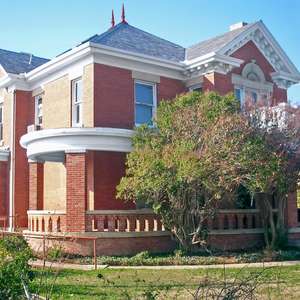
AlbertoArriaga33 is wrestling with plans for a new home in a tropical location. He doesn’t say exactly where, but conditions are certainly challenging: high heat and high humidity, with nighttime temperatures dipping only into the upper 70s and outdoor relative humidity hovering at about 70%.
Exterior walls will be grouted concrete block, what Alberto says is standard construction in the tropics. Outside walls will be finished with a cementitious plaster and then painted. On the inside, light steel framing and stud cavities filled with R-15 mineral wool batts.
“However,” Alberto writes in this Q&A post, “I have many doubts and still not sure if I quite understand how thermal mass works. I’ve read that typically you would want to keep the thermal mass inside in a hot climate in order to keep it from absorbing solar energy, and subsequently heating up your house at night.”
Alberto wonders how the mass of the concrete-block walls will affect interior conditions, and whether the interior insulation will be enough.
“My guess is it would slow down the transfer of thermal energy from the walls to the interior space as it radiates throughout the night. Is the thermal performance of the assembly affected substantially by whether the insulation is on the exterior or interior?”
Those are the questions for this Q&A Spotlight.
Let’s get our terms right
The term “thermal mass” pops up frequently, as it did in Alberto’s post. But, DCContrarian says, it’s not technically correct.
“‘Thermal mass’ is not a term used in science or engineering,” he writes.
Maybe not, says Malcolm Taylor, but in building design the term is commonly understood to mean the “capacity of a high mass material to absorb and store and release energy as heat.”
“And this is why…
Weekly Newsletter
Get building science and energy efficiency advice, plus special offers, in your inbox.

This article is only available to GBA Prime Members
Sign up for a free trial and get instant access to this article as well as GBA’s complete library of premium articles and construction details.
Start Free TrialAlready a member? Log in















5 Comments
I'd like to see more data on practical applications of "moisture buffering". For example, would clay plaster provide a significant comfort improvement in the common case where the AC has good latent removal during the day (when loads are high) and poor latent removal at night (because loads are low or even zero). Supplying dehumidification to every closed-door room can be a design challenge and is often not done.
There is another ideology that actually may work. This is extremely low mass walls and specialty insulation. In the 1950's there was a company that created a multi layer reflective barrier insulation (5 layers total). This supposedly worked as good or better than glass wool (mass insulation). However mass wool won out in advertising and distribution.
Another possibility is sandwiched galvalume over foam with Z brackets interior and drywall/plaster.. This is how we build VERY efficient stand alone walk in freezers today (except for drywall)..
This is a LOW mass answer to the problem and allows for vaulted ceilings that are efficient as well. The best part is that closed cell foam and galvalume create a non vapor permeable water and moisture proof barrier that resolves condensation issues. Current costs are about 3-5% higher than standard construction techniques.
There is certainly a reasonable argument that it would be best to have all thermal mass (thermal capacitance in my world) in an ice or water tank and the rest of the building low mass (so that thermostat setback works better). This will result in less energy use, without the comfort problems of room temperature variations.
>"[best to have] thermal capacitance...in an ice or water tank and the rest of the building low mass (so that thermostat setback works better)."
Do you mean isolate(insulate) the water/ice medium so that it becomes a sort of on-demand thermal storage system? How would you transfer the energy to and from that ice/water storage?
Yes. Agreed, energy transfer will require power - typically a heat pump and a water pump.
Log in or become a member to post a comment.
Sign up Log in